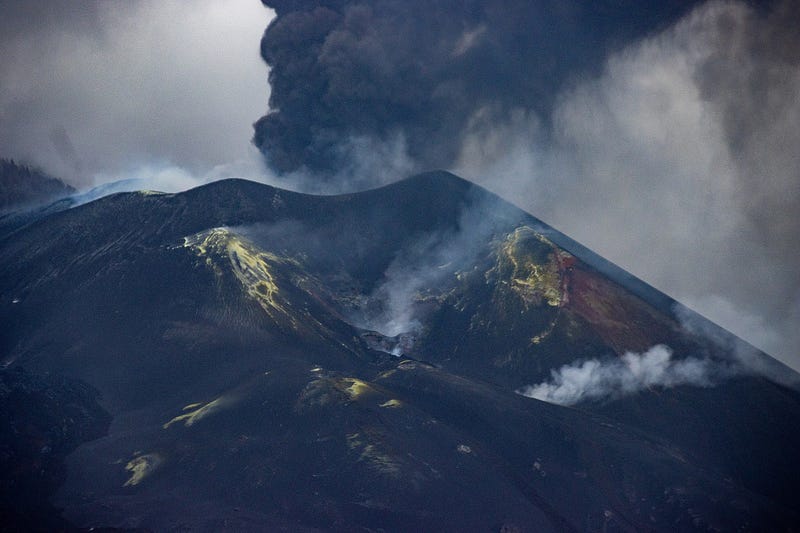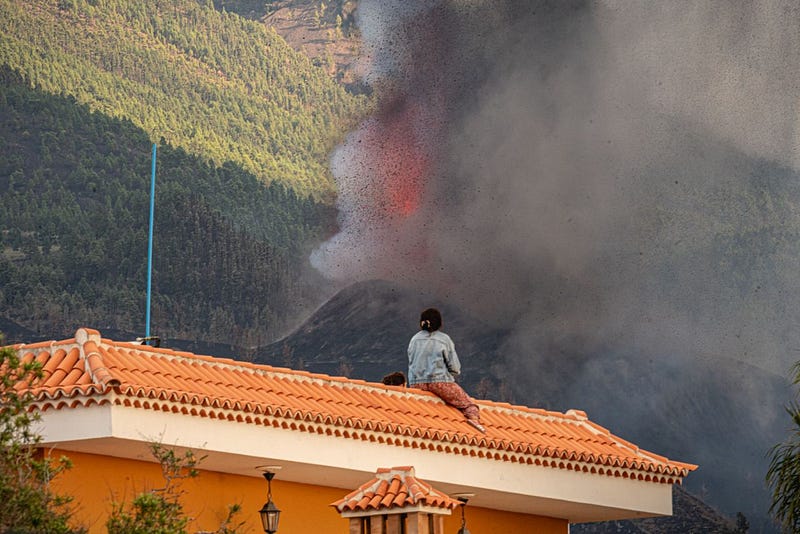The Volcanic Eruptions of La Palma: A Source of Mega-Tsunami Fears
Written on
Chapter 1: An Overview of La Palma’s Volcanic Activity
The island of La Palma, known for its frequent volcanic activity, has made headlines due to the potential threat of a mega-tsunami resulting from its eruptions. La Palma is recognized as the most active volcanic island in the Canary Islands archipelago. The catastrophic fissure eruption that took place in September 2021, referred to as Tajogaite, has drawn significant media attention globally.

[Photo: Photograph by Mike Peel (www.mikepeel.net)., CC BY-SA 4.0, via Wikimedia Commons]
La Palma consists of two primary volcanic formations. The northern region features an older volcanic center, which includes the expansive Caldera Taburiente (9 km wide and 1.5 km deep). In contrast, the southern section is dominated by Cumbre Vieja, the most active volcano in the archipelago. Historical records show that fissure eruptions have been occurring since 1585, with Cumbre Vieja being the source of numerous craters and cinder cones.
Section 1.1: Historical Eruptions and Their Impact
Before the devastating eruption in 2021, Cumbre Vieja had two notable eruptions. The first, known as the San Juan eruption, started on June 24, 1949, and involved three active vents: Duraznero, Hoyo Negro, and Llano del Banco. This event lasted until July 30 and featured moderate strombolian activity, minor phreatomagmatic explosions, and significant seismic activity.
On July 10, lava from Llano del Banco reached the ocean, forming a lava delta. The final day of the San Juan eruption saw lava from Duraznero fill El Fraile crater, creating a lava lake that eventually overflowed. Approximately 60 million m³ of lava was expelled during this eruption.
Subsection 1.1.1: The Teneguía Eruption
The Teneguía eruption, which occurred from October 26 to November 18, 1971, followed seismic activity. This eruption also saw lava flow reaching the Atlantic Ocean, leading to tragic consequences when volcanic gases caused the death of a tourist. Notably, before the fissure eruption began, residents of Fuencaliente were evacuated.
Chapter 2: The Tajogaite Eruption of 2021
The eruption known as Tajogaite lasted for 85 days and was preceded by an intense swarm of seismic activity that began on September 11, 2021, resulting in over 22,000 tremors. The eruption commenced on September 19 at 2:13 p.m. local time, with two fissures opening and lava fountains erupting. Authorities evacuated about 5,500 residents and raised the alert to the highest level.
In the days that followed, the lava flow destroyed everything in its path, including numerous structures in the town of Todoque. The eruption produced thick ash clouds that reached heights of 5–6 km, leading to ash fallout across various areas of the island.
On September 28, the lava reached the ocean at Los Guirres beach in Tazacorte, resulting in the formation of a lava delta as the lava cascaded off a cliff, creating dramatic steam explosions.
In October, new vents opened, leading to further devastation, including the destruction of Todoque and significant damage in La Laguna. By mid-October, nearly 7,000 residents had been evacuated. Efforts to rescue trapped animals during the eruption were notable, though some attempts proved unsuccessful.
The eruption culminated on December 15, 2021, covering an area of 1219 hectares with an average lava thickness of 12 meters, causing approximately $1 billion in damages.
Section 2.1: The Myth of the Mega-Tsunami
Prior to and during the eruption, sensationalist media reports suggested that the western slope of Cumbre Vieja could collapse into the ocean, potentially triggering a mega-tsunami up to 50 meters tall. While two geologists proposed this idea in 2000 as a worst-case scenario, later studies have deemed such a collapse highly unlikely. Even if such an event were to occur, the most severe impacts would be localized.
During the time of its indigenous Guanche inhabitants, La Palma was known as Benahoare. The island fell under Spanish control in 1493, and the term "caldera" was introduced into geological terminology by German geologist Leopold von Buch in 1815.

[Photo: Eduardo Robaina, CC BY-SA 3.0, via Wikimedia Commons]
In conclusion, while the eruptions of La Palma have undeniably caused significant destruction, the apocalyptic scenarios surrounding mega-tsunamis remain largely unfounded in scientific research.